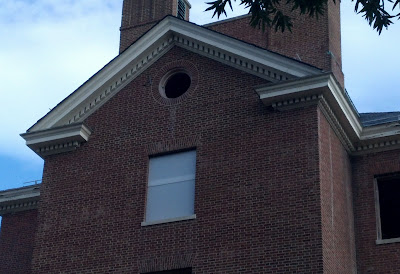Working on the restoration of a historic building is always awe-inspiring, but working to restore a historic building that once housed the laboratories and research of brilliant medical scientists who advanced our medical knowledge by leaps and bounds over the last 75 years inspires a particular awe.
 |
| Cornice restoration work by Historic Restorations in progress at Building #3 of the NIH campus in Bethesda, MD |
In 1938, when The National Institutes of Health (NIH) broke ground on their new 70-acre campus, Building #3 was constructed to house intramural laboratories, including animal breeding facilities on the second and third floors. In the 1950’s, Building #3 was home to ground-breaking biochemists and other scientists, some of whom would go on to become Nobel Laureates for their research and advancement of medical knowledge.
In 2011, after being abandoned and left to sit vacant and unused for years, Building #3 is making a come-back to its former glory in an adaptive re-use project designed to restore and renovate the stately brick building for office and administrative space for the Intramural Research Program. Our master craftsmen are currently working on restoring and preserving eight-piece cornice. Not all the wood in the cornice is salvageable, requiring our carpenters to use consolidant and wood-fill epoxy to retain original fabric and fabricate custom moldings to match existing moldings where the wood was too badly damaged to restore.
The story of the design and construction of this massive complex, and Building #3 in particular, including an intimate look at how large projects like this were handled in the 1930’s, how much tradespeople earned for their craftsmanship, pictures of the construction process, and a general history of the establishment of such an impressive, and important, medical campus, please read Michael Lyons’ article 70 Acres of Science: The NIH Moves to Bethesda available on NIH’s website at:
